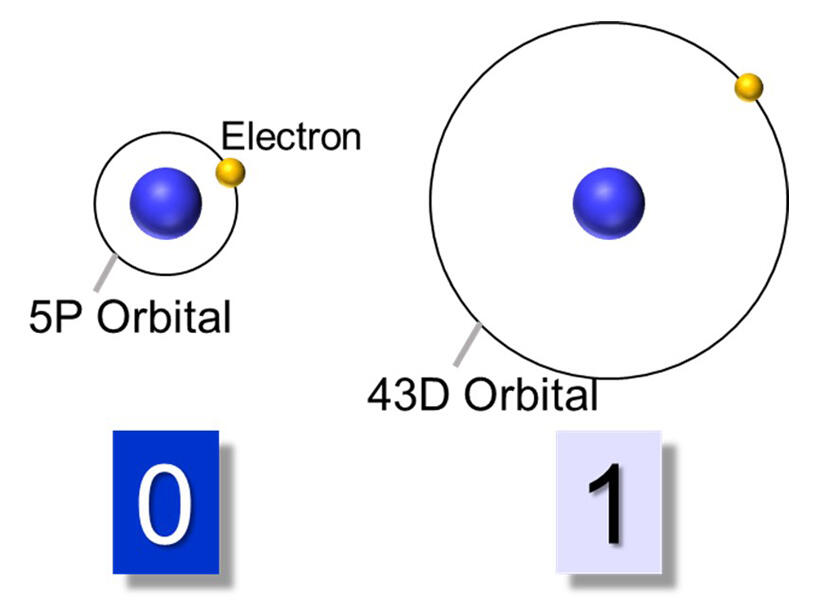A research group led by Professor Kenji Ohmori at the National Institutes of Natural Sciences' Institute for Molecular Science has successfully executed the world's fastest two-qubit gate, a fundamental arithmetic element essential for quantum computing. The achievement involved capturing two gaseous rubidium atoms cooled to almost absolute zero at micron intervals using optical tweezers and operating them with a special laser beam that emits light for just 10 picoseconds (pico = one trillionth of a second). This process produced the fastest-ever operations of just 6.5 nanoseconds. This accomplishment is expected to lead to entirely new cold atom quantum computer hardware that will transcend the limitations of the superconducting and ion-trap quantum computers that are currently under development. The findings were published on August 9 in the online edition of the British scientific journal Nature Photonics.

Created and provided by Specially Appointed Assistant Professor Takafumi Tomita, Ohmori Group, Institute for Molecular Science
The team successfully implemented a controlled-Z gate, a typical two-qubit gate. This gate is an operation that changes the superposition state of one qubit from 0 plus 1 to 0 minus 1 according to whether the other qubit is in a state of 0 or 1.
The accuracy (fidelity) of quantum gates is easily degraded by environmental noise and operating lasers, which creates difficulties when developing quantum computers. However, the time scale of noise is generally slower than one microsecond (one-millionth of a second). So, producing a quantum gate that is sufficiently faster than this would make it possible to completely avoid the degradation of computational accuracy caused by noise, bringing practical quantum computing much closer to reality.
For this reason, all quantum computer hardware development has focused on producing faster gates over the past two decades. Incidentally, the previous world record for a high-speed gate was 15 nanoseconds, achieved by Google AI (Google Inc.'s artificial intelligence division) in 2020 with a superconducting quantum gate.
In contrast, this two-qubit gate with cold atom hardware is far faster at 6.5 nanoseconds. Being more than two orders of magnitude faster than noise makes these environmental effects negligible. This achievement is thus a significant step towards realizing practical quantum computing. In this experiment, researchers cooled two gaseous rubidium atoms to an ultra-low temperature of about 1/100,000 of one Kelvin, which is as close to absolute zero as possible, using a special cooling method involving a laser beam. The two atoms were aligned with micron-spacing using a special technique called optical tweezers, in which a laser beam is focused to micron-scale fineness to trap microparticles at the focal point.
Next, two of the atoms were irradiated with ultrashort pulsed laser light emitted for only one hundred billionth of a second, and the changes were observed. Then, two electrons trapped in the 5S orbitals of the two adjacent atoms (atom 1 and atom 2) were knocked into giant 43D electron orbits (Rydberg orbitals) by absorbing the ultrashort laser pulses, and electron energy was observed to be periodically transferred between the two atoms.
This energy exchange between atoms changes the quantum state of the two atoms and can be applied to quantum gate operations. The team used this phenomenon to perform a quantum gate operation using a quantum bit in which electrons in the 5P intermediate state, are the "0" state, and those in the 43D Rydburg state are the "1" state.
When atoms one and two were prepared as qubits one and two, respectively, and when energy exchange was induced using the ultrashort laser pulse, the symbol of the superposition state of qubit two was reversed only when qubit one was in the state of 1 during one energy cycle equaling 6.6 nanoseconds or the equivalent of one energy cycle. The researchers observed the symbol of qubit two's superposition state to change from a 0 plus 1 state, where the peaks of the two waves are superimposed and align with each other, to a 0 minus 1 state, in which the peaks and troughs of the two waves are aligned. In other words, the team confirmed that the two-qubit gate (controlled-z gate) operated for 6.5 nanoseconds.
Professor Ohmori opened the press briefing on this achievement by saying, "Through our research, we have reached the point where we can realize up to 400 qubits. We hope to expand this to about 1,000 qubits in the next year or two. We also believe we can accelerate the gate operation speed to just one nanosecond in the future."
This article has been translated by JST with permission from The Science News Ltd.(https://sci-news.co.jp/). Unauthorized reproduction of the article and photographs is prohibited.




